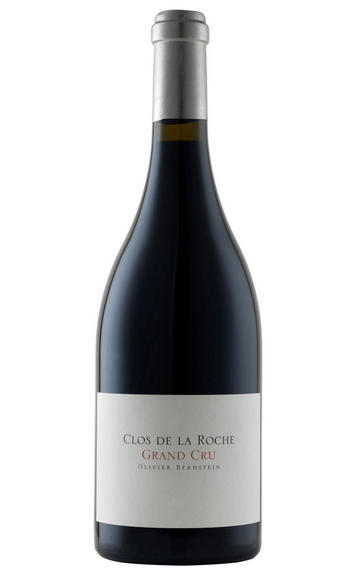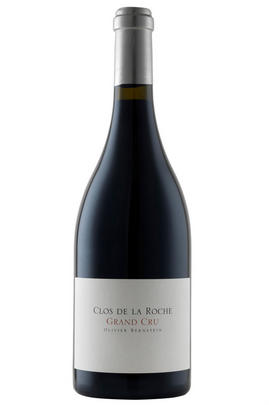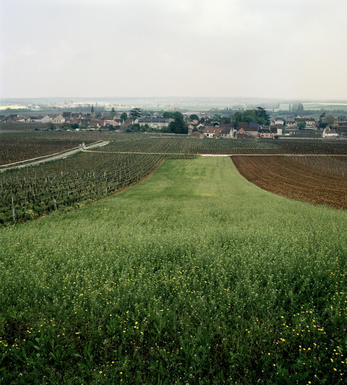
2007 Clos de la Roche, Grand Cru, Olivier Bernstein, Burgundy

Critics reviews
(Allen Meadows, burghound.com, Issue 33, Jan 2009)
Olivier Bernstein is a new name but one that is unlikely to be overlooked for long. This self-styled 'micro négociant' doesn't bother with wines as lowly as those labelled Bourgogne or with a simple village name. He produces only six premiers crus (two of them white) and four grands crus, helped substantially by Richard Seguin of Gevrey-Chambertin, who, as part of the same family as own Domaine Dugat-Py, has access to some superb vineyards, many of them with 70-year-old vines. Born in Touraine into a family of music publishers, Bernstein studied viticulture and oenology in Beaune and claims particular inspiration while working briefly with the late Henri Jayer in 2002. This initially led him to acquire and renovate Mas de la Dévèze in Roussillon, where he is based (to judge from his car licence plate), but he now spends much of his time on the six-hour journey between Tautavel and the modest cellar rented from Seguin in a Gevrey backstreet.
(Jancis Robinson, New brooms in Burgundy, jancisrobinson.com, Jan 09)
About this WINE

Olivier Bernstein
Much has changed in Burgundy, both economically and climatologically, since Olivier Bernstein began his eponymous project with the 2007 vintage. Yet the aim here remains essentially the same: to produce wines of the highest possible quality and to forego nothing in a quest to create elegant, sensual and refined wines that can sit comfortably among the top wines of Burgundy.
It is this quest for perfection that has seen Olivier cease production of two of his Premiers Crus in order to focus on his domaine holding in Champeaux, and the seven Grands Crus which are now well established in the range: Charmes-Chambertin; Mazis-Chambertin; Chambertin Clos de Bèze; Chambertin; Clos de la Roche; Bonnes Mares; and Clos de Vougeot.

Morey-Saint-Denis
Morey is sometimes ignored between its two famous neighbours, Chambolle-Musigny and Gevrey-Chambertin, but its wines are of equal class, combining elegance and structure. Morey-St Denis, being that little bit less famous, can often provide excellent value.
The four main Grand Cru vineyards continue in a line from those of Gevrey-Chambertin, with Clos St Denis and Clos de la Roche the most widely available. Clos des Lambrays (almost) and Clos de Tart (entirely) are monopolies of the domains which bear the same names.
Domaine Dujac and Domaine Ponsot also make rare white wines in Morey-St Denis.
- 64 hectares of village Morey-St Denis
- 33 hectares of Premier Cru vineyards (20 in all). Best vineyards include Les Charmes, Les Millandes, Clos de la Bussière, Les Monts Luisants
- 40 hectares of Grand Cru vineyard. Clos de Tart, Clos des Lambrays, Clos de la Roche, Clos St Denis and a tiny part of Bonnes Mares
- Recommended Producers: Dujac, Ponsot, Clos de Tart, Domaine des Lambrays

Pinot Noir
Pinot Noir is probably the most frustrating, and at times infuriating, wine grape in the world. However when it is successful, it can produce some of the most sublime wines known to man. This thin-skinned grape which grows in small, tight bunches performs well on well-drained, deepish limestone based subsoils as are found on Burgundy's Côte d'Or.
Pinot Noir is more susceptible than other varieties to over cropping - concentration and varietal character disappear rapidly if yields are excessive and yields as little as 25hl/ha are the norm for some climats of the Côte d`Or.
Because of the thinness of the skins, Pinot Noir wines are lighter in colour, body and tannins. However the best wines have grip, complexity and an intensity of fruit seldom found in wine from other grapes. Young Pinot Noir can smell almost sweet, redolent with freshly crushed raspberries, cherries and redcurrants. When mature, the best wines develop a sensuous, silky mouth feel with the fruit flavours deepening and gamey "sous-bois" nuances emerging.
The best examples are still found in Burgundy, although Pinot Noir`s key role in Champagne should not be forgotten. It is grown throughout the world with notable success in the Carneros and Russian River Valley districts of California, and the Martinborough and Central Otago regions of New Zealand.


Buying options
Add to wishlist
Description
Clos de la Roche is perhaps the most stylish of the four Bernstein Grands Cru Burgundies. This is very tightly knit with waves of red berry fruit flavours crossing the palate. Not as powerful as the Bonnes Mares or Mazis-Chambertin but a wine of exceptional detail and finesse.
(Jasper Morris MW, BBR Buyer)
wine at a glance
Delivery and quality guarantee